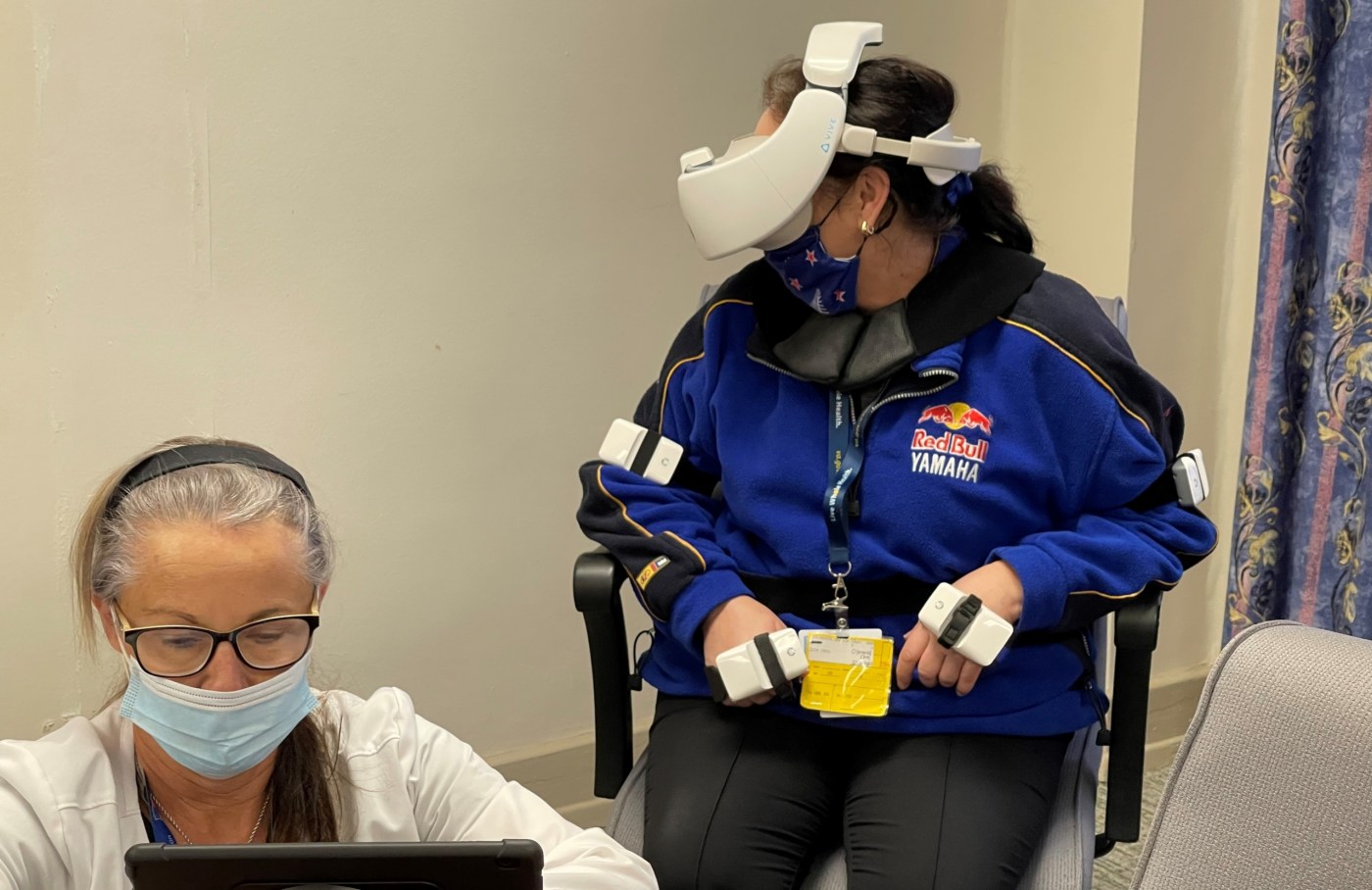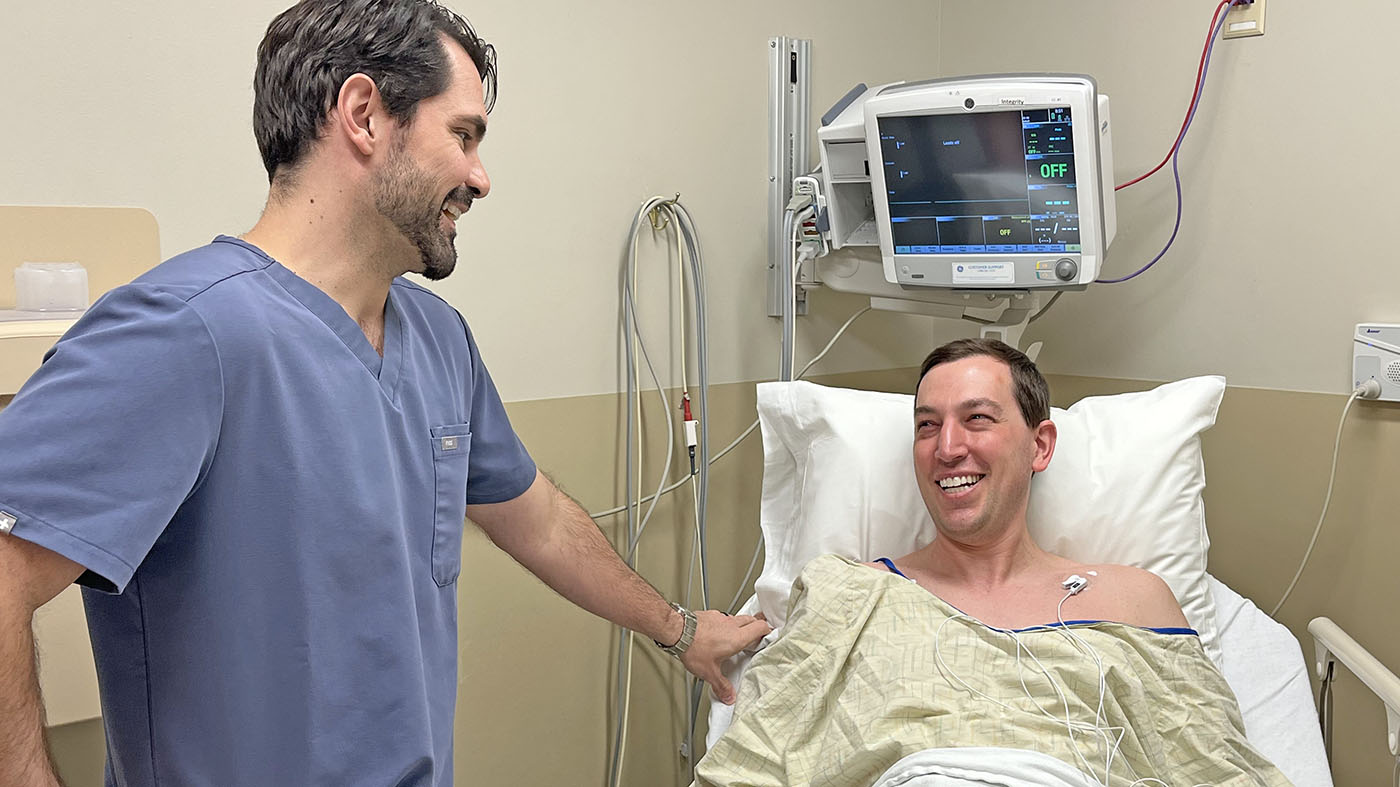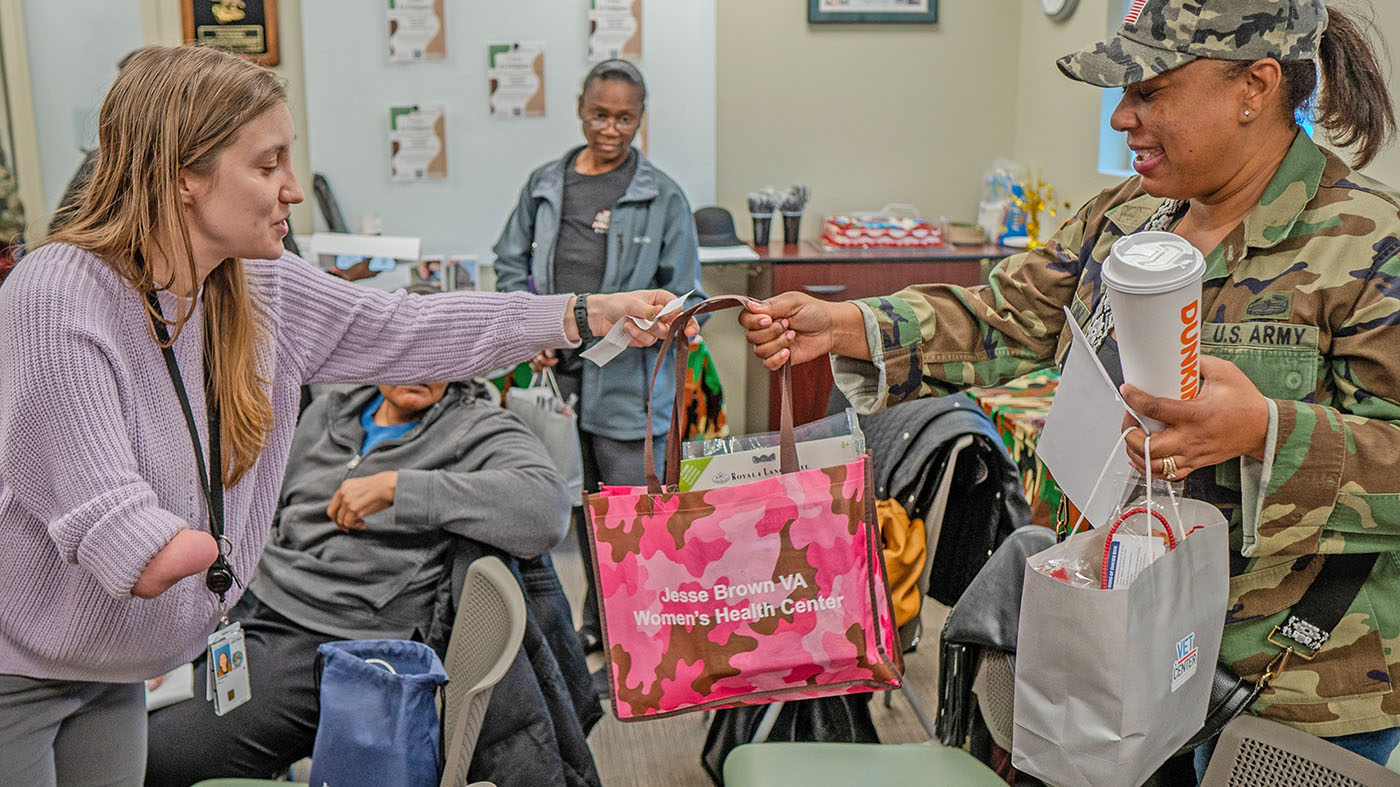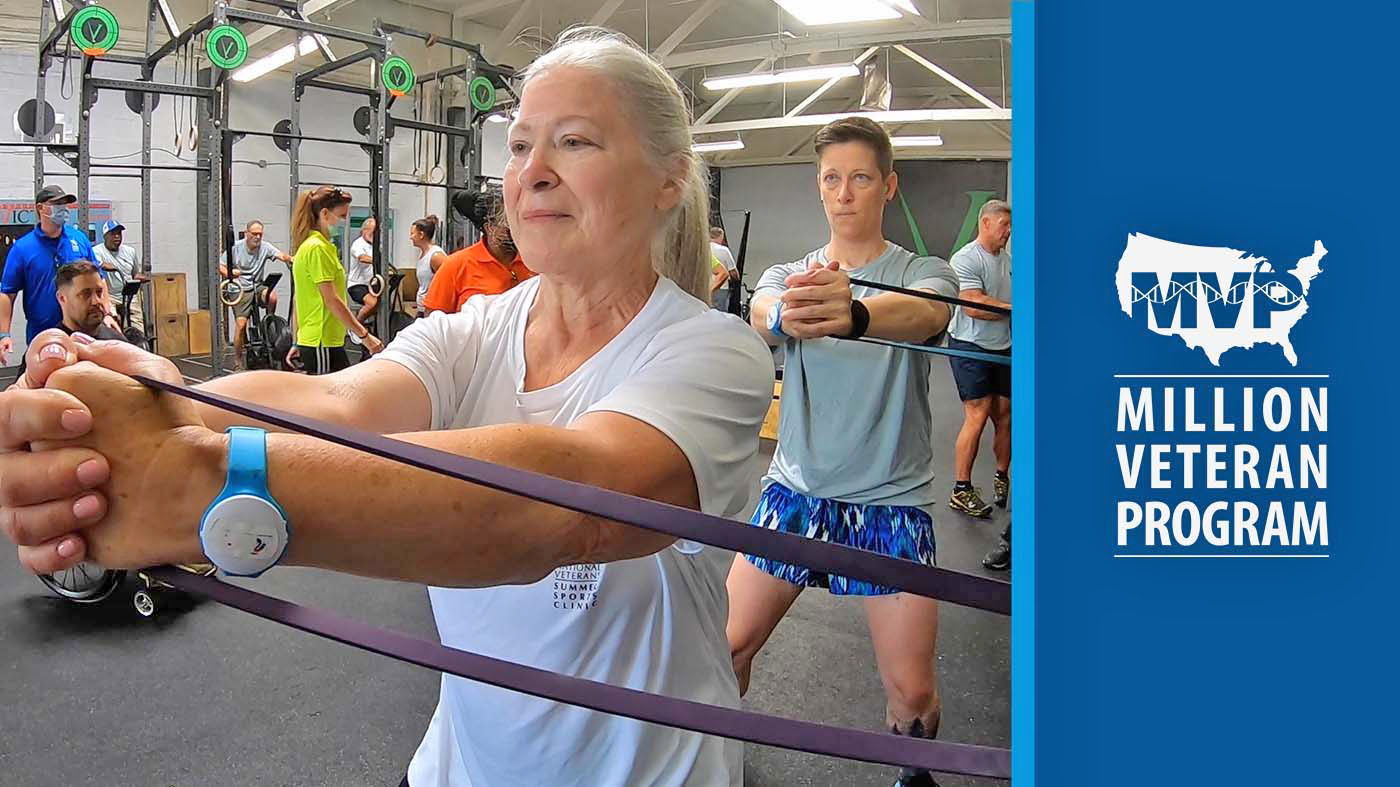Imagine having the power to temporarily escape your current reality for a virtual one. While this might sound like “The Twilight Zone,” our story of Navy Reserve Veteran Sharon Thompson has a happy ending.
“Virtual reality puts me in a different atmosphere, almost like my own little world,” Thompson said. “I felt happy, like I was there, and the experience was real.”
Thompson was one of the first Veterans to try the new virtual reality systems donated by Soldier Strong. Her sessions included paint by number and matching objects of similar shapes and colors. The virtual reality simulator consists of a headpiece to view the altered reality and sensors hooked up to each hand, bicep and back.
“Virtual reality is another tool in our kit to help Veterans with PTSD and cognitive impairments improve relaxation techniques and range of motion,” said Carl Vinson VA Recreation Therapy Supervisor Jane Helsing. “We can monitor and track progress on a tablet controlling the programs being used by the Veteran.”
Other programs can be added
Data collected through these interactions can be compared over time to illustrate therapeutic progress. Other more challenging programs can be added to enhance therapy sessions and achieve loftier goals.
Thompson, who deployed to Iraq, struggled with PTSD after redeploying home and is currently receiving inpatient treatment at Dublin VA.
Virtual reality exposure therapy (VRET) facilitates the emotional engagement of patients with PTSD during exposures to the multiple sensory stimuli made possible by the virtual environment, bypassing symptoms of avoidance and facilitating control on the part of the therapist.
This is according to the research paper, “Efficacy of Virtual Reality Exposure Therapy in the Treatment of PTSD: A Systematic Review.”
Provides safe and welcoming environment
VRET can be particularly useful in the treatment of PTSD that is resistant to traditional exposure because it allows for greater engagement by the patient and, consequently, greater activation of the traumatic memory which is necessary for the extinction of the conditioned fear.
One of the benefits of incorporating virtual reality into PTSD and cognitive impairment therapies is that it provides a safe and welcoming environment. Focusing on the virtual world enables Thompson to temporarily disconnect from reality allowing her to pursue her therapy calmly and happily. While Thompson is enjoying herself, Helsing is busy analyzing the data being recorded and looking forward to comparing the new data against previous sessions to gauge improvement.
Thompson is one of the few Veterans to spearhead new virtual reality therapies to help shape the interconnection of treatment and tech for the future.
Topics in this story
More Stories
Navy Veteran and president of the American Medical Association got a colonoscopy and encourages other Veterans to do the same.
Chicago Vet Center and VA gave women Veterans information on VA services available to them.
MVP’s research informs personalized care for Veterans, supporting whole health and beyond.







If you are interested in trying this therapy what are the steps and requirements to enter program.
That is my question also. Can such therapy help Viet Nam veterans? I came home with PTSD according to everyone around me but I don’t even know what triggered it or why. I have received little actual help. Sincere people have genuinely tried to help me but I am still in the same place I was in 1968.
Is this therapy recognized as being helpful to Vietnam veterans?